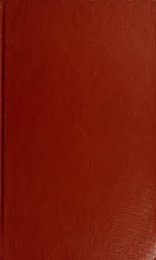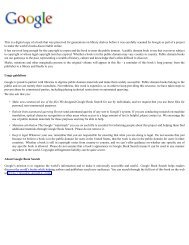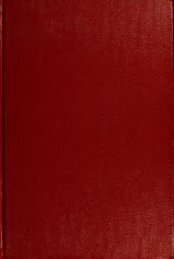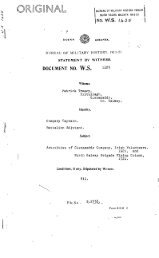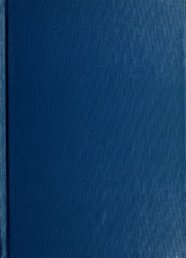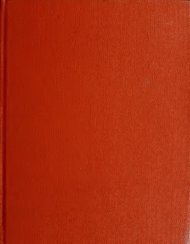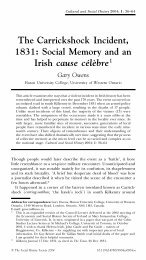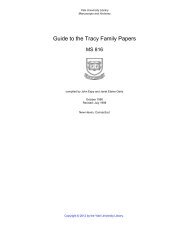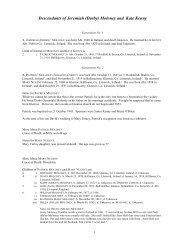Y Cymmrodor. v. XIV. 1901.
Y Cymmrodor. v. XIV. 1901.
Y Cymmrodor. v. XIV. 1901.
Create successful ePaper yourself
Turn your PDF publications into a flip-book with our unique Google optimized e-Paper software.
4 English Lazu in Wales and the Marches.<br />
pointed sheriffs for Ang-lesey, Carnarvon and Merioneth,<br />
the old inheritance of the Princes of Gwynedd, for Flint,<br />
parcel of the Palatinate of Chester which was fìnally<br />
annexed to the Principality of Wales temp. Edward II,<br />
and for Carmarthen and for Cardigan and Lampeter,<br />
i.e. Llanbadarn, by Aberystwyth. To Carnarvon, Merio-<br />
neth and Flint, certain cantreds and commotes were<br />
assigned, of the others it was merely stated that they<br />
should have their present metes and bounds. The three<br />
South Wales districts included a part of West Carmar-<br />
thenshire which had been obtained by the princes of<br />
North Wales after the extinction of the Welsh princes<br />
of the South, and nearly the whole of the present county<br />
of Cardigan, the only Welsh county which represents<br />
an ancient territorial division, and the only part of Wales<br />
in which the Welsh had succeeded in driving back the<br />
Lords Marcher. The territory comprised in this Statute<br />
remained for centuries what was known to English law as<br />
" Wales", ruled by Eng-lish law as modified by the Statute,<br />
and was, until the death of Arthur Tudor, the son of<br />
Henry VII, granted by Charter (as was the Earldom<br />
of Chester) to each heir apparent " and to his heirs Kings<br />
of England"; nevertheless, the charters to towns were<br />
granted by the king- and not by the Prince of Wales.<br />
The Prince was solemnly invested with the chaplet ring-<br />
and sceptre ; to this day the eldest son of the sovereign is<br />
born Duke of Cornwall, but he is created Prince of Wales<br />
and Earl of Chester. All the rest of Modern Wales not<br />
subject to the Statute was the " Marches", over which the<br />
King was, by 3 Edward I, cap. 17, proclaimed Sovereign<br />
Lord, and which, by 28 Edward III, cap. 2, was declared<br />
to be attendant on the Crown of Eng-land as heretofore,<br />
and not on the Principality of Wales, and under the same<br />
term were included the forty-four Lordships which were



